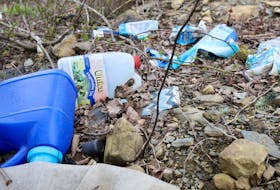AMHERST - A local girl's struggle with a rare bacterial infection could help others in a similar situation.
Nine-year-old Emily Tuttle spent six weeks at the IWK hospital in Halifax while doctors tried to establish what was causing osteomyelitis, a bone infection, in her left leg.
Dr. Jennifer Smith, a pediatrician with infectious diseases, worked on Emily's case and confirmed the bacteria's name is Lactococcus lactis..
"I can say that from looking at the literature, it appears to be the first reported case of osteomyelitis (from Lactococcus lactis)," said Smith, also noting that someone else may have gotten osteomyelitis from the same organism but that it may not have been reported.
"We don't know a lot about this organism or exactly how Emily would have obtained it. With most cases of osteomyelitis in kids, it comes from bacteria on our skin. In this case, the osteomyelitis wasn't due to bacteria that is typically on the skin, but by Lactococcus lactis."
Although doctors don't usually comment on specific cases due to patient confidentiality, Emily's parents, Jenn and Rick, wanted to make it public in case it helps future patients.
"As soon as they said it could help other children, we said yes," said Jenn. "When Emily was sick, (the doctors) went to see if there was another case that could help her, but there wasn't."
While at the IWK, Emily underwent two surgeries on her leg, which included taking part of the bone during the first one to try to identify the organism causing the infection.
Smith said it wasn't until the bone was taken out that they were able to identify the organism and respond with antibiotics to specifically treat it.
"They had to use a special molecular test to do that because she had been on antibiotics and, of course, antibiotics kill off bacteria," said Smith, adding shared genes are looked for and then the bacteria is identified by working backwards.
Lactococcus lactis, according to the literature Smith has seen, has also been known to cause skin infections, infective endocarditis and liver abscesses.








